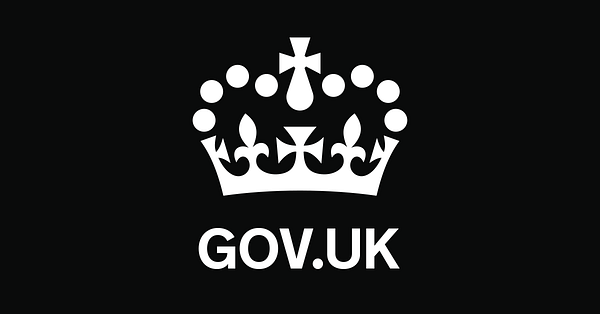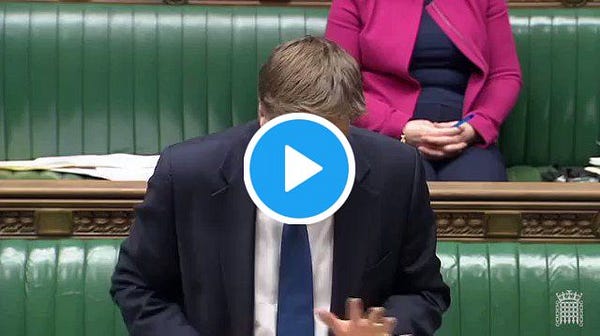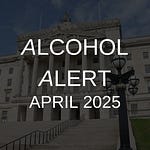Hello and welcome to the Alcohol Alert, brought to you by The Institute of Alcohol Studies.
In this edition:
The UK Government weighs up the trade-off between keeping pubs open or reopening schools in light of potential new lockdown
New drink-driving data from the Department for Transport show no ‘significant improvement’ for another year, as road accidents and casualties stay largely unchanged since 2010
Research looks into the recent history of alcohol and mental health policy for older people in the UK 🎵 Podcast feature 🎵
A study finds alcohol advertising in Formula One racing is a potential driver of alcohol consumption
Top health experts call for alcohol labelling overhaul as investigation finds consumers are not provided with adequate information about the beverages they drink
In Ireland, the 2020 Alcohol Market Review and Price Survey finds drinkers are able to reach their weekly alcohol limit for pocket money prices
Better Health campaign urges drinkers to think about the ‘empty calories’ in alcohol
Global drinks producer Diageo manage to keep their UK sales operation afloat during the pandemic, through targeted e-commerce tactics
Rumours that a booze ban on drinking in football stadiums will be lifted resurface in the press
We hope you enjoy our roundup of stories below: please feel free to share. Thank you.
Another (potential) lockdown – pubs versus schools
Will pubs have to close their doors again in the event of a second wave of COVID-19? Yes, if chair of the Scientific Advisory Group for Emergencies (SAGE) sub-group on pandemic modelling, professor Graham Medley, had his way (The Guardian, 01 Aug).
The London School of Hygiene and Tropical Medicine academic told BBC Radio 4’s Today programme: ‘It might come down to a question of which do you trade-off against each other and then that’s a matter of prioritising, do we think pubs are more important than schools?’
And so, a national debate began, with pubs pitted against schools radio and TV studios across the UK’s broadcasting network:
Early reports suggested the government would choose to keep pubs open regardless, with English pubs ‘likely to be spared any new restrictions on social contact to stem coronavirus outbreaks’ (The Guardian, 03 Aug). This came as drinkers and businesses toasted the reopening of pubs, cafés and restaurants indoors in Wales (BBC News Wales, 03 Aug).
In an economic sense, the importance of public houses being open for business is obvious: overall consumption levels have fallen as a direct result of mass closures of licensed premises during the recent lockdown, a contributing factor to the country’s worst recession on record.
However, in some instances, the trade-off with health became too stark to ignore. Scotland’s beer gardens opened on 06 July, but lockdown restrictions were reimposed in Aberdeen after a COVID-19 cluster outbreak was found to be linked to a pub in the region (BBC Scotland, 05 Aug).
And south of the border, the clamour for closure grew alongside fears of a second lockdown. Councils called for more power to shut pubs flouting COVID-19 guidance to combat the problem (Morning Advertiser, 10 Aug).
Subsequent reports suggested that Prime Minister Boris Johnson would ‘sooner close pubs, restaurants and shops than have schools shut again amid concerns for both the educational future of children and for their safety and wellbeing without the safeguarding provided in the classroom’ (The Independent, 10 Aug).
However, if we have learnt anything from the lockdown earlier this year, we know that if the pubs close their doors again, the off-trade will be on hand to pick up the slack. Nielsen data found that many drinkers flocked to purchase alcohol from their local off-licensed premises: ‘in the 17 weeks of lockdown to 11 July, UK consumers spent £7·7bn on alcohol in UK supermarkets – an increase of £1·9bn year on year’ (The Grocer, 30 Jul).
It appears that for many Brits, drinking at home is no substitute for drinking in a social setting. Gemma Cooper, senior client business partner at Nielsen, told the trade mag:
Without being able to go out or socialise with others during the peak of the pandemic, and no access to dine-in pubs or restaurants, we have seen a natural decline in alcohol consumption even as at-home drinking increased.
Furthermore, even as the government holds out hope for pubs keeping the economy afloat, research from Senior Lecturer in Sociology at the University of Portsmouth, Emily Nicholls, and Lecturer in Psychology at the University of East London, Dominic Conroy, suggests that ‘although many people missed pubs, they are not necessarily ready to rush back to those that have reopened’ (The Conversation, 03 Aug).
Interviewing a cross-section of self-defined social drinkers about their drinking habits during lockdown, they found that those who expressed a reluctance to drink alone ‘missed the sociability of going to pubs’, but others were also aware that ‘the reopening of pubs does not signify a return to normality’, all of which raises the question of whether pubs can return to the position of being institutions of spontaneous, intimate, and fluid social interactions between individuals any time soon.
It may also explain the government’s desire to focus on implementing widespread restrictions on social contact rather than closing down specific industries like pubs.
Ultimately, consumer confidence will determine pubs’ future: business-friendly measures such as granting permission to sell takeaway alcohol may not have as much impact on sales as is hoped.
At some point in this trade-off between indoor venues for which is most worthy of being exempted from restrictions, the government will have to abandon the hope that the coronavirus knows the difference between a school classroom, a boozer and a living room, to paraphrase a columnist from The Independent (04 Aug). Ironically, for all the emphasis on priding the economy over public health, it may well be public health measures to eliminate the virus that are the only key to pub industry surviving this pandemic in good health.
Drink-driving data shows no ‘significant’ improvement yet again
There were an estimated 240 deaths due to road accidents where at least one driver or passenger was over the drink drive limit in 2018, a small but ‘not statistically significant’ fall on the previous year, according to the Department for Transport (DfT).
In fact, the new Reported Road Casualties in Great Britain, final estimates involving illegal alcohol levels release (27 Aug) saw little change in many areas, indicating little improvement in drink-driving policy for the best part of the decade.
The new lower central estimate of drink drive deaths (representing 13% of all deaths from reported road accidents in 2018), similar to the levels reported in 2010; however, the decrease from 250 deaths in 2017 is not statistically significant, meaning this decrease is more likely due to chance.
The DfT also estimated that 8,680 people were injured or killed when at least a driver or passenger was above the drink drive limit in 2018, a 1% increase on last year, although still 4% lower than in 2016. The annual number of drink-driving accidents of all severities rose 3% to 5,890 in 2018 – again, lower than in 2016 (-3%). And 5% of reported accidents on Great Britain’s roads involved drink drivers, a level that has remained more or less the same since mid-2000s.


Developments in UK alcohol policy and public mental health for older people
🎵 Podcast feature 🎵
In many countries, an increase in the number of people aged over 50 is resulting in a subsequent shift of those who are most vulnerable to alcohol-related harm. Using Disability Adjusted Life Years (DALYs) as a marker of morbidity, alcohol increased to the 5th (from 14th) highest risk factor for those aged 50 to 69 in England, between 1990 and 2017.
Amidst this scenario, a new piece of research aims to detail developments in UK alcohol policy for older people, based on evidence for a growing public health problem with alcohol misuse in that age cohort.
Published in the Journal of Public Mental Health (29 Jul), expert consultant old age psychiatrist Dr Tony Rao carried out a review of studies going back 20 years, using health and social care databases, including grey literature.
Seven major themes in alcohol policy were examined: early policy development, trends in morbidity and mortality, low-risk drinking, prevention of alcohol-related harm, screening and brief intervention, public education and integrated care for dual diagnosis.
The review found that although there has been progress in areas such as screening and brief intervention (through the use of the AUDIT Test), evidence of improvements from recent policy implementations reducing alcohol-related harm have yet to be seen. Together with other research on public mental health, this review could be used to implement best policy practice for health and social outcomes in the older population.
Watching Formula One may drive viewers to drink
Alcohol advertising in Formula One racing is a potential driver of alcohol consumption, according to researchers from the University of Nottingham, after a study found nearly 4 billion references to alcohol in 21 televised races over a nine-month period (BMJ Open, 07 Aug).
The study used 3,396 one-minute coded intervals from 21 Formula One races and their advertisement breaks, held between 15 March to 01 December 2018.
Classified into the following categories (actual use, implied use, other alcohol appearances and brand appearances) exposure to alcohol in these intervals was detected in all of the races, with alcohol appearances in 56% of racing footage and 9% of advertisement breaks.
Since ten of the 21 races were broadcast live on Channel 4, this represents a significant level of alcohol exposure to the UK population. It is estimated that 3·9 billion alcohol gross impressions were delivered, including 154 million to children under 16 years. In addition, 18 of the 21 races were shown before the 9PM watershed which could significantly affect young people’s impressions of alcohol.
The study adds to the growing body of research suggesting exposure to alcohol branding on national television is a contributor of subsequent alcohol consumption, particularly amongst young people. Furthermore, whilst Ofcom enforces UK broadcasting regulations on alcohol (for example, by reducing the amount of alcohol content before the 9PM watershed), it has no regulatory power to control the advertising of alcohol through sporting events broadcast on TV, radio, or online, such as the Formula One Championships. Moreover, sporting events are frequently sponsored by alcohol industries themselves – in 2018, the Formula One Championships were sponsored by Heineken, thus providing a hugely influential source of unregulated alcohol exposure.
Alcohol labelling is failing consumers – AHA UK
Leading health experts and charities are calling for the government to take responsibility for labelling on alcohol products, as new research finds that the current system fails to provide consumers with adequate information to make healthy decisions about their purchases.
In the UK, alcohol producers are still not required by law to print calorie information on their alcoholic beverages: they are only required to show the strength of alcohol (ABV) and the container’s volume. Last month, the government announced that it will consult before the end of the year on the calorie issue, as part of its Obesity Strategy.
The alcohol industry claim that self-regulation is working and agreed to update labels to display the chief medical officers’ (CMO) weekly guideline – no more than 14 units of alcohol – by September 2019 – a target reiterated by the then health minister in January of that year.


The Alcohol Health Alliance UK (AHA UK) and Alcohol Change UK examined labels on 424 alcohol products in shops across the UK to see whether labels provided the CMO weekly guideline and other essential information that would allow consumers to make informed choices about their purchases. Their research found that:
More than 70% of labels did not include the drinking guidelines; over three years after they were updated and after the deadline the industry agreed with the government
The industry-funded Portman Group styles itself as the alcohol industry’s ‘social responsibility body’ and ‘leader in best practice’ but their members were least likely to include the correct low-risk drinking guidelines: just 2% did so
More than half (56%) of labels included no nutritional information. 37% of labels listed only the calorie content of the container, and just 7% displayed a full nutritional information table
Nearly a quarter (24%) of labels surveyed contained misleading, out-of-date health information, such as the old UK guidelines or guidelines from other countries
Health information was often illegible, with the average height of the text displaying information about alcohol units measuring 2mm – well under the 3·5mm required to be easily readable
A Canadian study released in May found that alcohol warning labels, like warnings on packets of cigarettes, are effective tools in helping drinkers make informed decisions. The study found consumers exposed to the labels were 10% more likely to know about the link between alcohol and cancer and three times more likely to be aware of the low-risk drinking guidelines.
AHA UK chair professor Sir Ian Gilmore, said:
Alcohol labelling in this country is woefully inadequate and not fit for purpose if we wish to build a healthier society. It is disappointing but telling that members of the Portman Group - the body purporting to promote “best practice” on labelling of alcohol products - are the least likely to display basic health information. It is time that health labelling is required for all products.
The public must be granted the power to make informed decisions about their health by having access to prominent health warnings, information on ingredients, nutrition and alcohol content at the point of purchase. The industry’s reluctance to include this information on their products suggests profits are being put ahead of people’s health.
You can read the full report, Drinking in the dark: How alcohol labelling fails consumers, on the AHA UK website.


Ireland: Weekly alcohol limit bought for pocket money prices
The new Alcohol Market Review and Price Survey from Alcohol Action Ireland (AAI) has found that Irish women can spend as little as €4·95 at off-licences to reach their weekly limit for low-risk alcohol consumption, with the figure rising to €7·65 for men (Aug 19).



The study was carried out in off licences over two weeks in July, in locations in Dublin, Sligo and Navan in a range of convenience stores, neighbourhood shops and supermarkets including Aldi, Centra, Dunnes, Lidl, Londis, Spar, Supervalu and Tesco.
The charity found that cider is the cheapest product by standard drink (at 44¢), followed by beer (52¢), wine (59¢), gin (69¢), vodka and whiskey (both 62¢). The recommended low-risk limits for alcohol consumption in men is 17 standard drinks spread out over the course of a week, while the limit for women is 11 standard drinks.
The AAI said its annual off-licence price survey confirmed the ‘exceptional affordability of alcohol to everyday shoppers and the urgent necessity to commence minimum pricing of alcohol products that will ensure the strongest, cheapest alcohol at very low cost is eliminated from the market’.
AAI chair, professor Frank Murray, said the findings demonstrated the need for the new government to introduce minimum pricing of alcohol products:
Vital decisions, currently being put off or stalled by vested interests, will have to be made by this government.
Minimum unit pricing of alcohol products, which offers significant gains for public health, must be implemented urgently; spurious economic rationale proposed by the alcohol lobby cannot be allowed to trump the health of a nation.
Empty calories in alcohol still add up, say Balance
Balance, the North East alcohol office, urge drinkers to think about the ‘empty calories’ in alcohol as part of a nationwide drive encouraging people to get healthy and lose weight.
Week 5 of the NHS Weight Loss plan (w/c 24 August) from Public Health England’s Better Health campaign turned the spotlight on alcohol. Many of us don’t think of alcohol as being high in calories – but while we might avoid a dessert, we might not think twice about a couple of drinks.
Alcohol contains around seven calories per gram, almost as many as a gram of fat. But research suggests around eight in ten people are unaware of calorie content in many of their drinks, and so underestimate the true content.
This is at least partly down to the fact that many alcohol producers still don’t list on their packaging the number of calories contained in drinks, denying their own customers of the right to know how many calories they consume.
Alcohol is estimated to account for nearly 10% of the calorie intake of those who drink, with around 3·4 million adults consuming an additional days’ worth of calories each week – totalling an additional two months of food each year.
Colin Shevills, director of Balance, said (you can hear his full response in the podcast):
It is clear that people need more information on alcohol labels and alcohol firms have been dragging their heels for the best part of two decades about providing this. The government has promised it will consult on calorie information on alcohol this year and we are calling ministers to make this happen.
But we need to go further and ensure people see all the relevant health advice on product labels – something which producers are failing to do. We all need to keep ourselves fit and healthy in these times and that includes not drinking too much. People need the right information to make informed decisions to be able to look after their health.
Making the most of a lockdown: How online commerce is keeping Diageo’s sales afloat in the UK
Despite the closure of bars, pubs and restaurants since March 2020 due to the UK lockdown, global alcohol producers Diageo have managed to accelerate its sales through e-commerce. Reports state that although sales in Europe decreased by 12%, UK sales only decreased by 4% (London Evening Standard, 04 Aug).
Diageo claim the success is largely attributable to their team of digital marketing specialists, who were able to monitor a shift from on-trade to online commerce during the lockdown. Spotting trends in internet searches for goods such as ‘luxurious desserts’ and ‘cocktail shakers’, they sought to take advantage by providing retailers with links for relevant Diageo products to retailers such as Sainsbury’s and Tesco’s (where 60% of Diageo’s drinks are sold), ‘so that customers were able to purchase these with ease’.
As UK managing director Dayalan Nayager – who regularly tells his staff ‘data is at the front of everything’ – explains:
Why would we go ahead with these big launches at that time? Because of the trends we were seeing online.
On one level, responding to consumer demand is simply the raison d’etre of business. However, it is interesting to note the lengths to which alcohol producers like Diageo are prepared to go to do so, relative to public health calls to raise awareness of harmful drinking among those most vulnerable during the pandemic lockdown.
Stadium booze ban to be lifted?
Lifting the decades-old ban on booze consumed in the common areas of football grounds is one of several post-lockdown proposals under consideration, according to sources aligned with the Premier League (Mail Online, 03 Aug).
Football’s elite tier body has set up a working group examining various initiatives, along with medical experts, the Sports Grounds Safety Authority and the government, who want to see fans back inside grounds by October, should it be safe.
Any change may well come in the shape of a trial period, which could be initiated by 5A(3) of the Sporting Events (Control of Alcohol etc) Act 1985 which allows the secretary of state to make the order designating amending the restriction – or that there shall be no restriction – on alcohol consumed in all seats.
The proposal comes amid growing pressure to scrap the legislation, with figures like the then English Football League boss Shaun Harvey branding it ‘disproportionate’ in 2018, and the European confederation UEFA trialling the sale of alcohol in stadiums for Champions League and Europa League fixtures during the 2018/19 season.
This contrasts with one of the country’s other great stadium sports, rugby union, whose governing body in Wales has tested alcohol-free zones for fans wishing to attend matches free of the potential disorder that could result from alcohol.
Alcohol harm and COVID survey: Please input and share!
A message from Alcohol Health Alliance UK
What should our relationship to alcohol look like after this crisis? What do you think the government could be doing to support you, your community, and our country? Make your voice heard!
We want to hear your views about how COVID-19 has affected alcohol harm and what the government should do to tackle it. Your answers will help us highlight key issues to the government and convince them to take action.


The UK Alcohol Alert (incorporating Alliance News) is designed and produced by The Institute of Alcohol Studies. Please click the image below to visit our website and find out more about us and what we do, or the ‘Contact us’ button. Thank you.














